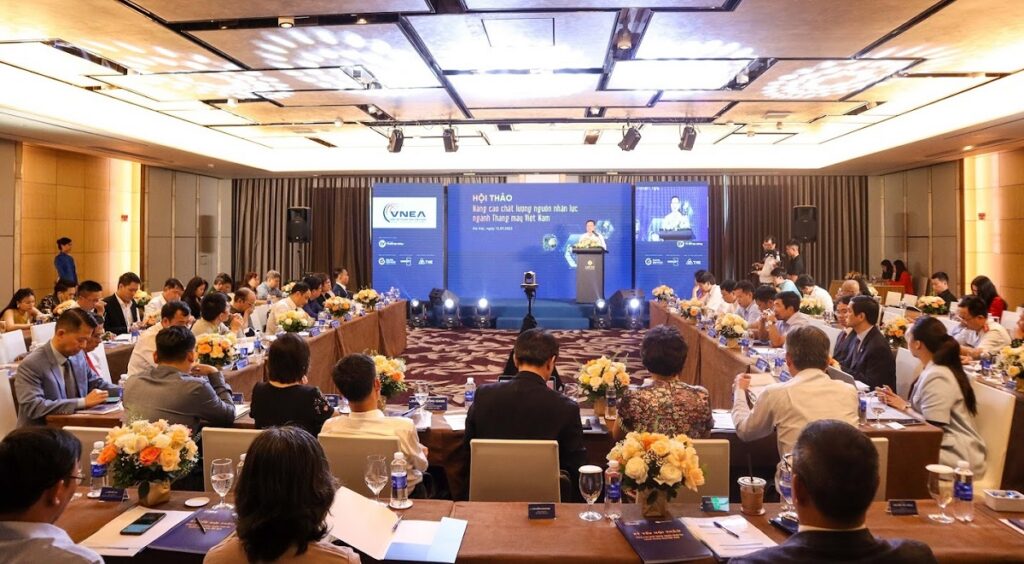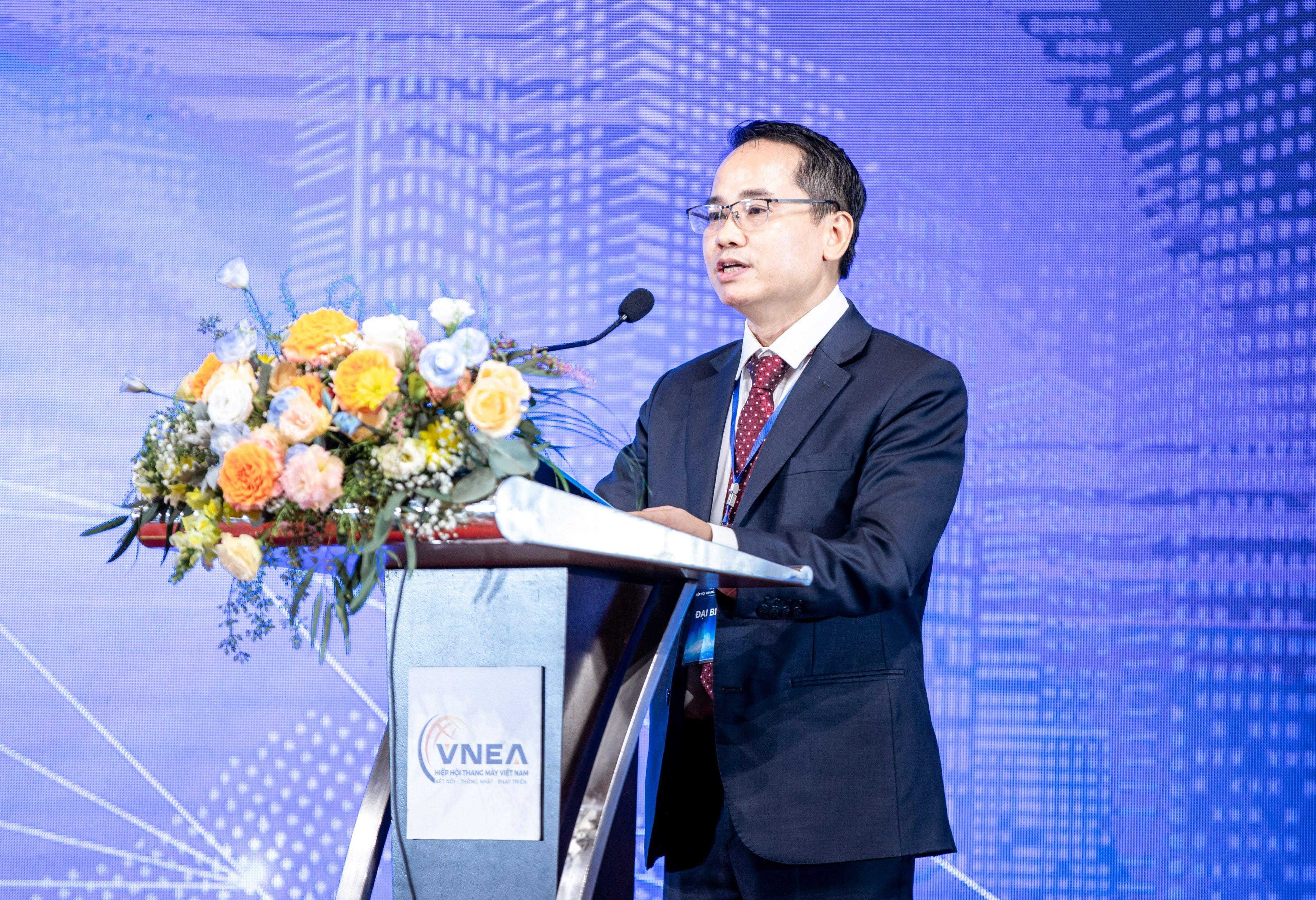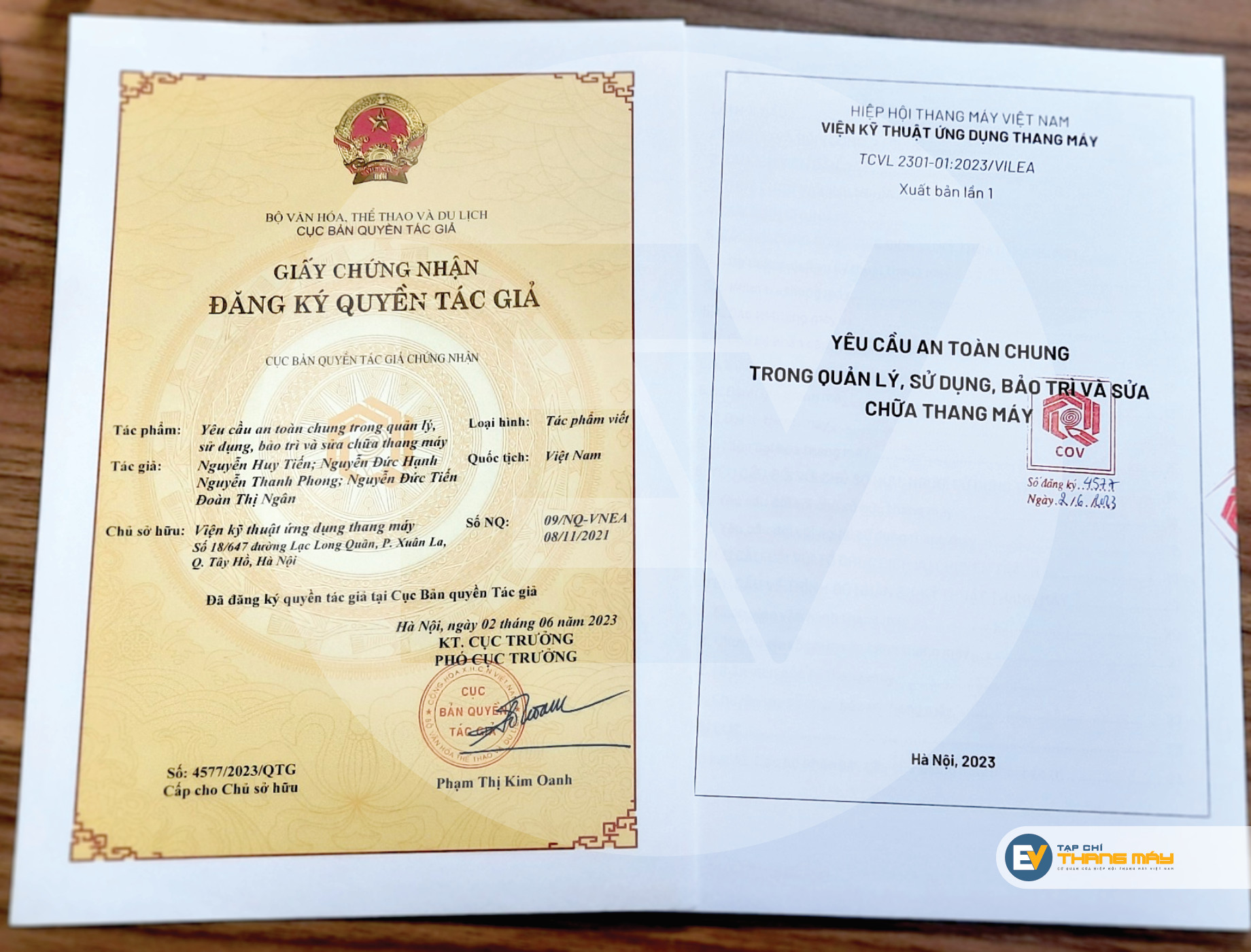TCTM – Setting the industry’s base standards is necessary and imperative, as such, Vietnam Elevator Association (VNEA) have been constructing a set of industry standards based on national standards (TCVN). In the short term, the base standards (TCCS) for elevators will be focusing on safety requirements in the manufacture and installation, as well as the in usage, operation, maintenance and repair.
The industry’s standards should have TCVN as a base and complement it with national cultural particularities and technological trends.
30 years since the elevator industry’s national standards have been established
The first set of standards for elevators, notation TCVN 5744:1993, was first published in 1993 with the name Lift – Safe requirements for installation and use. It was named Vietnamese standards according to the 1999 Ordinance on goods quality and changed to national standards after the 2006 Law on Standards and Technical Regulations. The 1993 standards were an expression of the vision that the industry’s managers at the time had when the country was still under embargo and installing an elevator was a luxury. It could be considered the first technical document on elevators in Vietnam, despite being quite short and simple, it satisfied the basic requirements for the safety of related parties in the Elevator – Installation unit – Operation manager – Consumer system.
The subsequent TCVNs went through many amendments and reforms based on the industry’s demands, experiences, and development directions.
The next set of standards, notation TCVN 5866:1995, Lift – Safety mechanisms, put forth the requirements for a number of mechanical devices for elevators, including speed control systems, safety gears, damping devices, cabin stopper (counterweight), and door interlocks. This is also the oldest TCVN still in effect.
The situation of the national standards for the elevator industry
Along with the construction industry, Vietnam’s elevator industry was established later than that of developed countries. In over a quarter of a century of development, we have inherited many scientific and technological developments from around the world, along with the standards of organizations and developed countries, including the Soviet Union National Standards (later changed to Russian Standards), GOST (Gosudarstvenny Standard), ISO (International Organization for Standardization), EN (European Norms), which we have been referencing in order to construct our TCVN.
We are standing on the shoulders of giants by inheriting these knowledges, however, how do we avoid “consuming” outdated technologies and unsuitable standards?
So far, Vietnam has over 30 TCVNs on elevators, escalators and lifts.
The two newest ones are TCVN 6396-20:2017, Safety rules for the construction and installation of lifts – Lifts for the transport of persons and goods – Part 20: Passenger and goods passenger lifts, and TCVN 6396 – 50: 2017, Safety rules for the construction and installation of lifts – Examinations and tests – Part 50: Design rules, calculations, examinations and tests of lift components. The two standards were built on the European Norms, EN 81-20:2014 and EN 81-50:2014, which are Europe’s newest standards for elevators. These TCVNs are the two most widespread and inclusive TCVN up to this day.
The requirements in these standards are considered to be higher than the average for Vietnam’s elevator industry, however, some of their content has been cited and included in the national technical regulations on occupational safety (QCVN) for elevators, the most important legal document to Vietnam’s elevator industry, QCVN 02:2019/BLDTBXH, published by the Ministry of Labour – Invalids and Social Affairs in 2019.
While the implementation of these standards in manufacturing and trading is still met with difficulties, mostly due to a lack of tools, at the very least, elevator manufacturers, technical services, owners, users and state management agencies have a “beacon of light” to light the way for the elevator industry.
The necessity for an industry standard – a step toward building the future of the elevator industry
In the meeting between core enterprises, held at the beginning of May 2023, by Vietnam Elevator Association (VNEA), the participants brought up the problem of counterfeits and frauds, which have caused difficulties for domestic manufacturers, and eroded customers’ trust in Vietnamese elevators. We are also too focused on low-value elevators and have not had the chance to provide our products to higher quality projects, such as office buildings, hospitals, schools, shopping centers, hotels, or mid-range apartment buildings, which are taking up a large percentage of Vietnam’s construction industry, despite being able to meet the strict technical safety requirements for these projects.
This is all because we could not separate our quality products from inferior ones.
Facing this situation, the meeting’s participants proposed establishing a TCCS for the elevator industry, which would improve the industry’s ability to compete. Establishing the industry’s standards will be the prerequisite for us to implement a sustainable development strategy for the elevator industry, contribute to complementing the national standards on occupational safety for elevators, and help establish a brand name for Vietnamese elevators.

“Improving workforce quality for Vietnam’s elevator industry” seminar, held in July 2022, by VNEA
According to the 2006 Law on Standards and Technical regulations, the establishment of the industry’s standards must stem from the demands and practical capabilities of the foundational level, meet the requirements for national safety and security, ensure the rise in quality and efficiency of socioeconomic activities, and improve the competitive power of products, merchandise and services in both domestic and international markets. Therefore, establishing these standards needs participation from the foundational level, from parties related to the standards’ implementation.
The Law also encourages economic organizations, career units, and social-employment organizations to take part in building the TCCS, which can then be converted (amended and reformed) into TCVN.
Industry standards need to apply and complement TCVN
With the particular characteristics of the industry’s development, TCVN is focusing on safety requirements for designing and installing elevators, which are the stages before the elevator is in use. These are very important stages, and the requirements have helped guarantee that consumers are provided with elevators that are safe and in accordance with the industry’s development phase.
However, according to Mr. Nguyen Huy Tien, VNEA’s Secretary-General: “We either do not have, or don’t have enough requirements for safety in elevator usage, maintenance, and repair.”
Mr. Nguyen Huy Tien believes that based on these demands, we need to construct a set of standards so that consumers, enterprises, and state management agencies can have a basis for activities related to the elevator industry.

Mr. Nguyen Huy Tien – VNEA’s Secretary-General
The industry’s standards should have TCVN as a base and complement it with national cultural particularities and technological development. In the short term, TCCS for elevators should not just focus on safety requirements in elevator manufacturing and installation, but also usage, operation, maintenance, and repair. This is especially true now that Vietnam’s elevator industry is in a period of intermingling when we need to both ensure close control of the manufacturing and installation process for new elevators, serving to expand the market, moving towards the goal of 1 million elevators by 2043, when we become a developed country, and safely operate the large number of installed elevators that are in use, which reaches up to 400.000 elevators, with the Compound Annual Growth Rate (CAGR) of 8%.
Therefore, Vietnam Elevator Association has presided over the planning and checking, drafting, and constructing of the industry’s standards in order to settle the enterprises’ issues and help improve and perfect our competitive power in accordance with the society’s trends and demands.

Base Standards TCVL 2301-01.2023/VILEA on “General safety requirements for elevator management, usage, maintenance, and repair”, constructed by Vietnam Institute of Lift Engineering Application, Vietnam Elevator Association
The industry’s standards should have elevators at its core, and consumers at its center. It also needs to solve the problems in ensuring elevator safety of related parties, such as owners, users, state management agencies, individuals working in the industry, and society.
Therefore, this set of base standards has been drafted and opened for suggestions from related individuals and organizations, such as enterprises, consumers, experts from related organizations, and state management agencies, to be applied in solving the practical and pressing demand for users, enterprises in the industry, and management agencies to have a basis for elevator management, usage, and repair.



